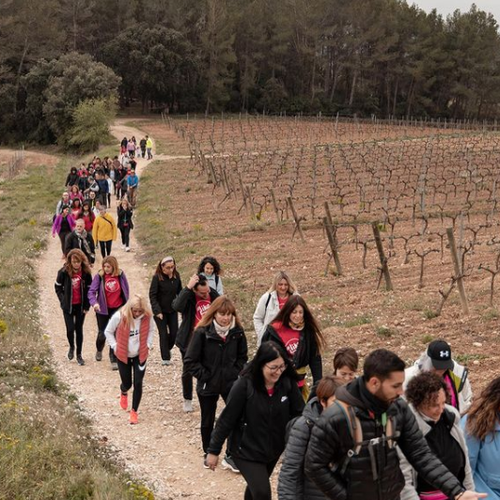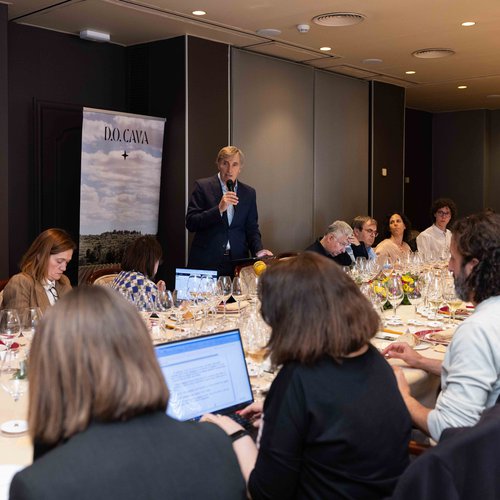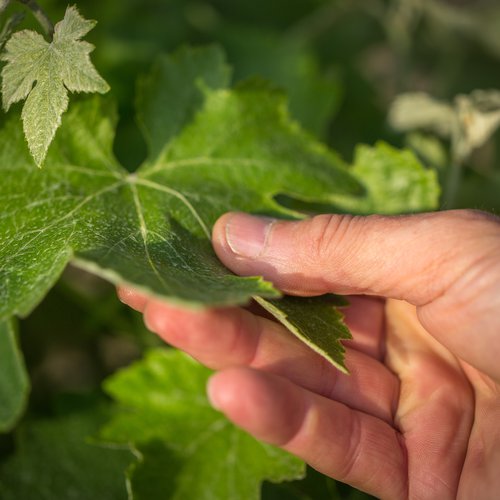Wine tourism experiences with Cava this summer
It is encouraging to see that wine tourism in Catalonia is currently enjoying a golden age. An increasing number of wineries are focusing part of their offering on this area of activity, which has two major advantages: firstly, providing an income for the wineries, and secondly - perhaps most interestingly - helping to disseminate wine culture.
During an enotourism visit, the wine-lover not only acquires knowledge in terms of grape varieties, oenological techniques and the winery’s history. From my point of view, the opportunity to discover the territory where the winemaking takes place, and sometimes to meet the people who make the wine too, is key. It seems to me that once you put a face and a place to it, a wine will never taste the same again – in fact, it will taste better.
As a bubbly lover, I can't help but take a look at the wine tourism activities offered by the Cava D.O. Visiting Cava wineries is one of my favourite activities and even more so in summer, when the range of possibilities is immense. Indeed, this is the perfect season to refresh yourself with sparkling wine. The small selection I propose below illustrates this variety.
What is wine tourism?
Wine tourism is the tourist activity that takes place in a wine-growing area, at whose epicentre is the wine itself. The model of this type of tourism, which is held up as the standard to which all wine regions should aspire, is in Napa Valley, California. Here American marketing experts have exalted an activity as old as viticulture. In fact, here in Spain, as well as planting vines, didn't the first Phoenician winegrowers sow the seeds of this fantastic way of getting to know the territory?
The origins of wine tourism can be traced back to the Middle Ages. At that time, the monastic orders raised viticulture to the highest level. They also reserved some parts of their monasteries as accommodation for the most privileged travellers: the nobility and powerful merchants made a special detour to stop there.
Several testimonies from these travellers attest to the quality of the wines produced by the monks. It is only natural that they would want to treat their guests to their best wines, especially if they were kings or dukes who could offer some valuable favour in exchange for these drinks.
Modern wine tourism, however, is related to the birth of tourism itself as a concept. In other words, with the “grand tour” that became fashionable back in the 18th century among young bourgeoisie who sought to improve their education by broadening their sphere of experience.
Although this is an important milestone in the history of wine tourism, we have to wait another century to meet the man who is considered to be its "father". James Busby was a British-New Zealander politician and businessman who, in the 19th century, travelled around the most renowned European vineyards collecting samples of the finest grape varieties to take them to Australia.
However, wine tourism in Spain (and in Europe as a whole), as we know it today, was formalised extremely recently - only 17 years ago. In 2005, the main European organisations dedicated to wine tourism published the VINTUR project. This examined the development of sustainable wine tourism and defined it as a "product consisting of the integration under the same thematic concept of the existing and potential tourism resources and services of interest in a wine-growing area".
Wine tourism in Comtats de Barcelona
The D.O. Cava is divided into four large regions, but its origin lies in the Comtats de Barcelona area, within the territory of Catalonia, and its epicentre is Sant Sadurní d'Anoia. Sant Sadurní is located just 45 kilometres from Barcelona, meaning that the city can serve as an ideal base of operations for the avid Penedès wine tourist.
Here, you will find a considerable number of small and medium-sized wineries, as well as some large, well-known ones. Most of them, regardless of their size, are family businesses that have been passed down from one generation to the next, and are run by people who are passionate about their territory, which is imbued with a wealth of nuances and rich orography.
When you visit the wineries of the Cava D.O., it is like visiting a collection of small pieces of mosaic that complement each other. Together they form a complete picture which can only be seen if viewed from above. Because of this, the activities they offer are richly rewarding.
Activities for an enotourism trip to the heart of the Cava region
- Guided tour of the vineyard and winery: the most basic form of wine tourism consists of a guided tour of the vineyard and winery, in which a representative of the brand explains the different viticultural and oenological practices. It is impossible to single out any one of them; each the D.O. Cava wineries has its own special and distinctive story to tell!
- Dramatised or musical visits: on occasions, the above can be dramatised visits, normally designed for families. There are frequent small concerts in the Giró Ribot gardens and DJ sets at the Cava wine bar at Alta Alella.
- Tours around the territory: Many wineries work with vineyards that are located some distance from each other. When the walk between vineyards is too long to be done on foot, the wineries can transport visitors in vehicles such as 4x4, Segways, electric bicycles... We highly recommend the circular bike tours of Can Suriol or the fun Segway tours around the vineyards of Carol Vallès.
- Cava tasting : the aim of any oenological visit is, ultimately, to get to know the character of Cava. The wineries usually offer a tasting of different wines that represent the variety of styles they produce. It is very difficult to choose just a couple, but I would suggest visiting Cava Mestres to try their very long-aged Cavas or Vilarnau to contrast their versatility and, in short, the versatility of Cava in general.
- Lunch at the winery: solid gastronomy is inseparable from liquid gastronomy, and a tasting is usually accompanied by a snack or even a complete meal (whether simple or sophisticated) paired with the winery's Cavas. Delicious examples are Agustí Torelló Mata's brunch lunch and Ca N'Estella's copious country breakfast.
- Stay in the winery's accommodation: a growing number of wineries are offering accommodation, of different levels of luxury, from agrotourisms to sophisticated spa hotels. The futuristic boutique hotel at Mas Tinell and the more classic, Modernist-style accommodation at the Bolet winery are two noteworthy examples.
- Visiting a Cava wine bar: a great option if, instead of visiting the winery, you want to have a pleasant drink with your friends. Many wineries have beautiful wine bars that are usually located next to the vineyard. Fantastic examples include the secluded Gastrocava Terrace of Cava Aguilera.
In short, an impressive number of activities are available, and as you can't do everything, I recommend these ones if you have two or three free days in the Comtats de Barcelona.
Visit, tasting and tasting menu at Codorníu
More than 450 years of history make Codorníu one of the great Cava houses and also one of those that has mastered the wine tourism experience. Out of the wide range of options, the Discovery Tour & Anna Menu is worth mentioning. This is a guided tour of the winery, with a tasting of two Cavas and a carefully selected menu. On the Codorníu visit, you will see a “Cava cathedral”, built by the modernist architect Josep Puig i Cadafalch.
Breakfast in the historic garden of Rovellats
We continue in the Modernist era, but moving outside. The garden of the Rovellats winery is the setting for a magnificent open-air breakfast in a relaxed and casual atmosphere. The experience includes toast with tomato, cold meats and cheeses, chocolate cake, fruit and Cava; the guided tour and the tasting of two Cavas Reserva.
To the top of the Foix Natural Park by 4x4 with Parés Baltà
The Parés Baltà winery cultivates a large section of its vineyards in the Foix Natural Park. The Foix is one of the rivers that forms the backbone of the Penedès region, at altitudes ranging from sea level to more than 643m. The Terroir Essence tour, which is done in a sturdy 4X4, is followed by cold meats and cheese, and the tasting of six Cavas that illustrate what you see and learn about: the grape varieties, soils and microclimates of the region.
Sailing between the sea and the vineyards at Alta Alella
Alta Alella is located in Comtats de Barcelona, in the Serra de Mar área, 20 minutes from Barcelona. As this is one of the wineries with the closest vineyards to the sea, its Cavas have a highly characteristic saline element. Sailing between the sea and the vineyards is the most sophisticated visit at this winery, which has just won the prize for the best wine tourism, awarded by the Association of Sommeliers of Catalonia. Visitors sail on a yacht from the port of Barcelona to reach Masnou and, from there, visit the winery and taste its magnificent Cavas. A very affordable luxury!






